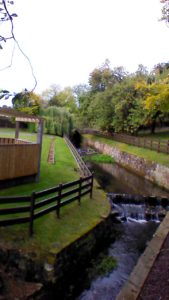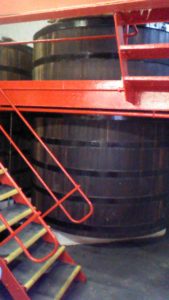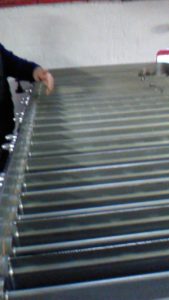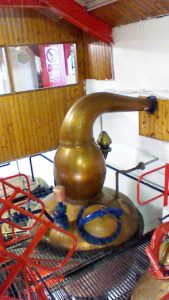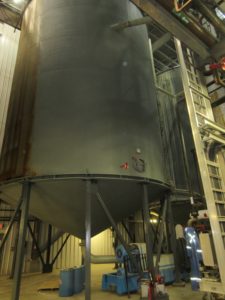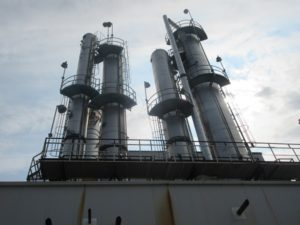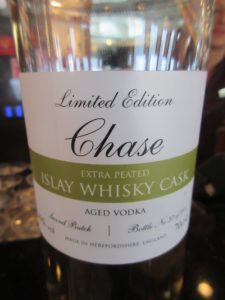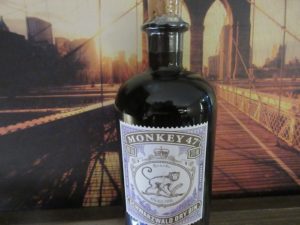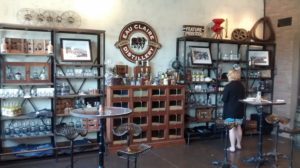Last week I was supposed to have done a tour to nearby Glenkinchie Distillery, but at the last minute the tour company advised they had to cancel due to the fact I was the only one who had signed up.
Last evening, sitting at my hotel desk writing a term paper on the use of Near Infrared Reflectance Spectroscopy as a tool to help malting companies, an email popped up advising that there would be a Glenkinchie tour today (Oct 13th).
Early this morning, I made my way into Edinburgh and found the tour office. Soon enough the bus arrived and we all boarded. The driver announced that straight away we would be heading to Glenkinchie – a Diageo owned distillery.
What ??????? Oh….no….here we go again I thought. I very nearly got off the bus and called it quits…My Blair Athol experience of earlier in the week was just that bad !
When we arrived at Glenkinchie we were met by our tour guide Gavin and sure enough there were the words I was dreading…” sorry folks, but this is a working distillery, so no cameras allowed…”.
But, Gavin turned out to be extremely knowledgeable and he had a very good presentation manner. And…he answered my questions – even the tough technical ones. At the end, there was none of the Blair Athol high pressure sales crap (as I encountered earlier this week) where you were more or less told what the dram of Scotch tasted like. Gavin was very good and he reminded us that we would all taste something different depending on our taste buds.
To that end…the Glenkinchie 12 year old aged in ex-Bourbon and finished in sherry butts gave me a great big beautiful face-full of fresh raspberries & black currants. Very nice!!
I went so far as to ask Gavin what Diageo products he enjoys when at home. His answer again was very forthright. He apparently drinks Dailuaine Single Malt and Benrinnes Single Malt. He have me a wee taste of both and wow! – I was hearing choirs of angels sing. Needless to say, a bottle of each is coming back to Canada with me. And no, I will not share if you come to visit. You can drink my home-made Bourbon aged 12 months in oak. I will take care of the 15 and 16 year old Dailuaine and Benrinnes.
As I was about to leave, I was introduced to one of the managers on site. I took the time to tell him of my miserable Blair Athol experience. I thanked him for being open with questions and I thanked him for a great tour. I asked Gavin for some corporate photos that I can use in my Workshops and presentations. I hope (fingers crossed, breath held…) that Gavin can find me some.
I am glad I went on today’s tour. My faith in Diageo has been restored. I look forward to visiting other Diageo sites on my next study trip to Heriot Watt in February 2018.
Oh…and by the way…the following photo is of Kinchie Burn, the wee creek from whence some of the distillery water is taken from.

